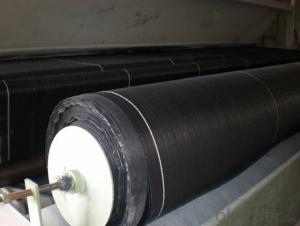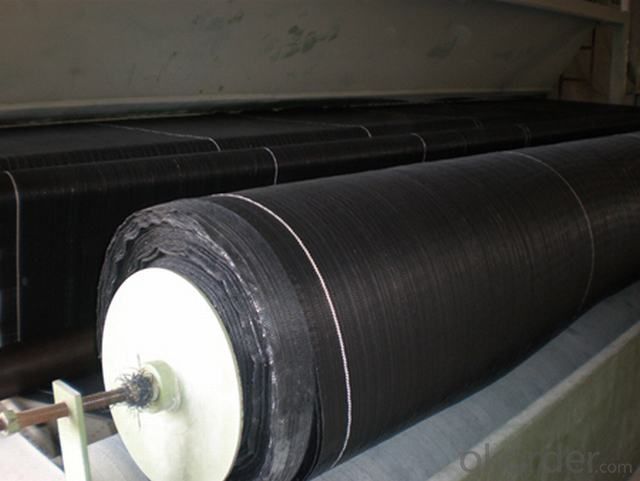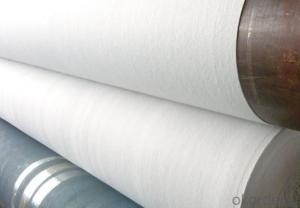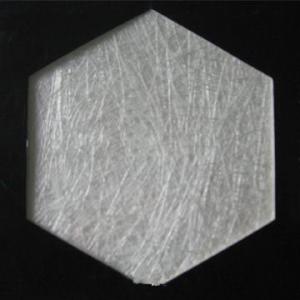Geotextil De Bentonita PP/PET Needle Punched Geotextile for Road Construction
- Loading Port:
- Qingdao
- Payment Terms:
- TT OR LC
- Min Order Qty:
- 20000 m²
- Supply Capability:
- 1500000 m²/month
OKorder Service Pledge
OKorder Financial Service
You Might Also Like
PP/PET Needle Punched Geotextile for Road Construction:
1)Technics/process :Needle punched / thermally bonded
2)Width:0.5m-6m(as you demand)
3)Packing:PE film and woven cloth
TDS of PP/PET Needle Punched Geotextile for Road Construction:
Material | PP(polypropylene) or PET(polyester) |
Technics/process | Needle punched / thermally bonded |
Specification | 100g/m-1300g/m2 |
Width | 1m6m(as you demand) |
Length | 100m(as you demand) |
Colour | White, black |
Packing | PE film and woven cloth |
Load | According to your specification |
Payment terms | T/T or L/C |
Delivery time | Within 3 weeks |
Application | Geotextiles with various indicators of quality, with good stress -- strain and toughness, seepage performance and uniformity, and width, etc., And is applicable to roads, water, rail, mining dams, rivers, airports and other civil engineering, anyone in the works played reinforcement, segregation, filtration, filtration, drainage, and then extend the project life, reduced cost and easy construction, and it is easy to ensure the quality of the project. |
- Q: How do geotextiles help in groundwater protection?
- Geotextiles help in groundwater protection by acting as a barrier that prevents the infiltration of pollutants into the groundwater system. They are used in various applications such as drainage systems, landfills, and erosion control, where they provide filtration and separation of soil particles, ensuring that only clean water enters the groundwater.
- Q: What is a geotextile?
- A geotextile is a synthetic material specifically designed for use in various civil engineering and construction applications. It is typically made from polyester or polypropylene fibers and is used to stabilize soil, separate different layers of soil, and provide drainage and filtration in infrastructure projects such as roads, landfills, and retaining walls. Geotextiles are essential in preventing soil erosion, improving soil strength, and increasing the lifespan of infrastructure projects.
- Q: Can geotextiles be used in green space development projects?
- Yes, geotextiles can be used in green space development projects. Geotextiles can provide various benefits such as erosion control, soil stabilization, and weed suppression, which are essential in creating and maintaining green spaces. By preventing soil erosion and promoting healthy plant growth, geotextiles contribute to the overall success of green space development projects.
- Q: Geotextile testing standards
- Staple stitch filament piercing filament woven weaving
- Q: Can geotextiles be used in slope stabilization projects?
- Yes, geotextiles can be used in slope stabilization projects. Geotextiles are commonly used in slope stabilization to reinforce the soil and prevent erosion. They provide strength, stability, and filtration to the slope, reducing the risk of landslides and improving overall slope stability.
- Q: How do geotextiles help in preventing sinkhole formation?
- Geotextiles help in preventing sinkhole formation by providing reinforcement and stabilization to the soil. They act as a barrier, preventing the migration of soil particles and reducing the potential for erosion. This reinforcement helps to maintain the integrity and strength of the soil, minimizing the risk of sinkhole formation.
- Q: Can geotextiles be used in sports field construction?
- Yes, geotextiles can be used in sports field construction. Geotextiles are often used as a separating layer between the soil and the drainage system, helping to prevent the mixing of different soil layers and promoting proper water drainage. Additionally, geotextiles can enhance the structural integrity of the field, provide reinforcement, and prevent the migration of fine particles within the soil.
- Q: Can geotextiles be used in canal lining applications?
- Yes, geotextiles can be used in canal lining applications. Geotextiles are often utilized as a barrier or separator between different soil layers in canal lining to prevent soil erosion and provide stability. They offer excellent filtration properties and can help in the effective drainage of water from the canal. Additionally, geotextiles can also reinforce the canal lining, enhancing its durability and reducing the chances of cracks or damage.
- Q: How are geotextiles affected by biological factors?
- Geotextiles can be affected by biological factors such as the growth of vegetation and the presence of microorganisms. Vegetation can penetrate and grow through geotextiles, reducing their effectiveness in providing separation and reinforcement. In addition, microorganisms can cause degradation of the geotextile material over time, compromising its structural integrity. Therefore, it is important to consider and manage these biological factors when using geotextiles in various applications.
- Q: Are geotextiles resistant to hydrostatic pressure?
- Yes, geotextiles are generally resistant to hydrostatic pressure. They are designed to allow water to pass through while providing a barrier against soil erosion and maintaining stability in various applications such as drainage systems, retaining walls, and road construction.
Send your message to us
Geotextil De Bentonita PP/PET Needle Punched Geotextile for Road Construction
- Loading Port:
- Qingdao
- Payment Terms:
- TT OR LC
- Min Order Qty:
- 20000 m²
- Supply Capability:
- 1500000 m²/month
OKorder Service Pledge
OKorder Financial Service
Similar products
Hot products
Hot Searches
Related keywords






























